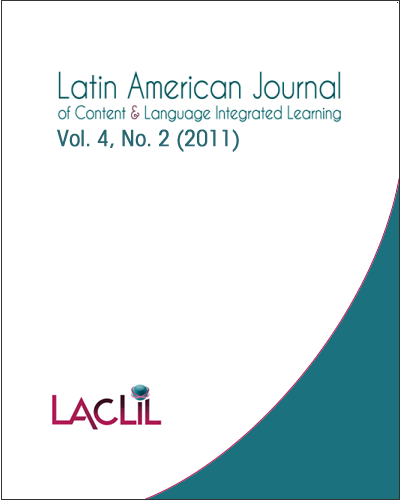CLIL: Achieving its goals through a multiliteracies framework
DOI:
https://doi.org/10.5294/laclil.2011.4.2.3Abstract
@font-face { font-family: "Cambria"; }p.MsoNormal, li.MsoNormal, div.MsoNormal { margin: 0in 0in 0.0001pt; font-size: 12pt; font-family: "Times New Roman"; }div.Section1 { page: Section1; }An integrated world calls for integrated learning. It is in this context that CLIL has emerged to cater to the linguistic and cultural demands created by this global age.
Coyle et al. (2010) foreground the integrative aspects of CLIL in the 4Cs Framework which connects “four contextualized building blocks” and as such “takes account of integrating content learning and language learning within specific contexts and acknowledges the symbiotic relationship that exists between these elements” (p.41). In other words, they recognize that acquiring and knowing a content/subject-matter area is about acquiring and knowing its texts.
In this paper, I suggest that CLIL goals can best be realized by adopting a multiliteracies framework. I begin by examining the links that exist between CLIL and a multiliteracies framework. Next, I review key aspects of a multiliteracies framework that can support CLIL goals. Finally, I present a model multiliteracies-based CLIL lesson.
Downloads
Downloads
Published
How to Cite
Issue
Section
License
This Journal and its articles are published under the Creative Commons CC BY 4.0 DEED Attribution 4.0 International license. You are free to: Share — copy and redistribute the material in any medium or format for any purpose, even commercially. Adapt — remix, transform, and build upon the material for any purpose, even commercially. The license cannot revoke these freedoms as long as you follow the terms of the license.








